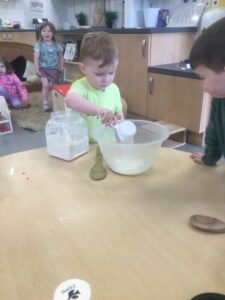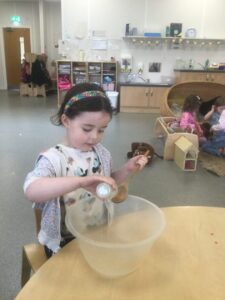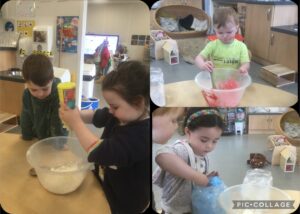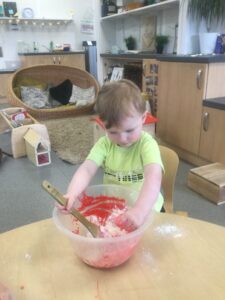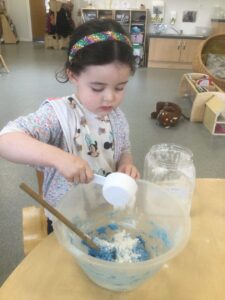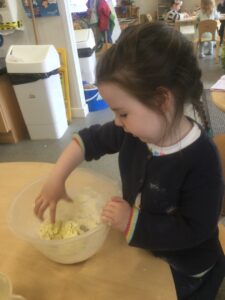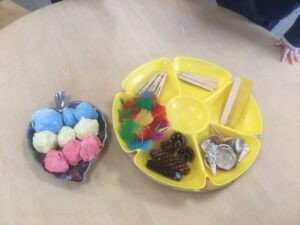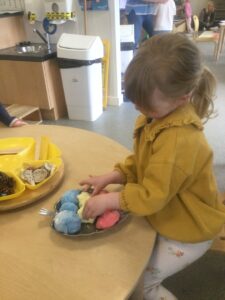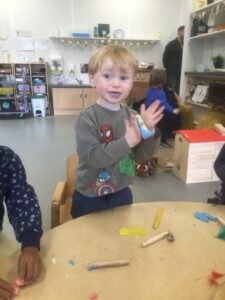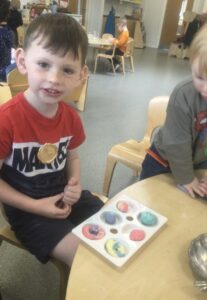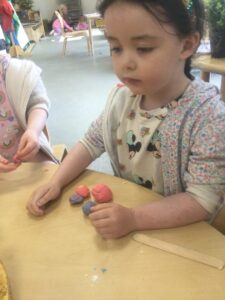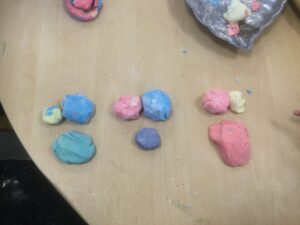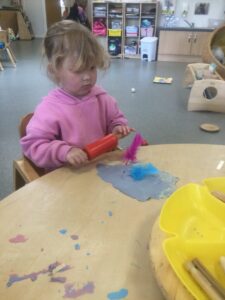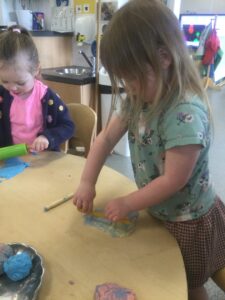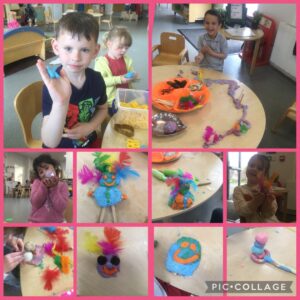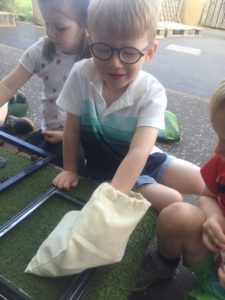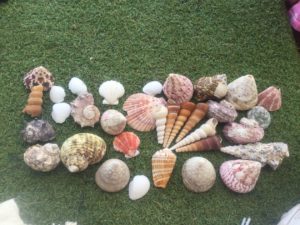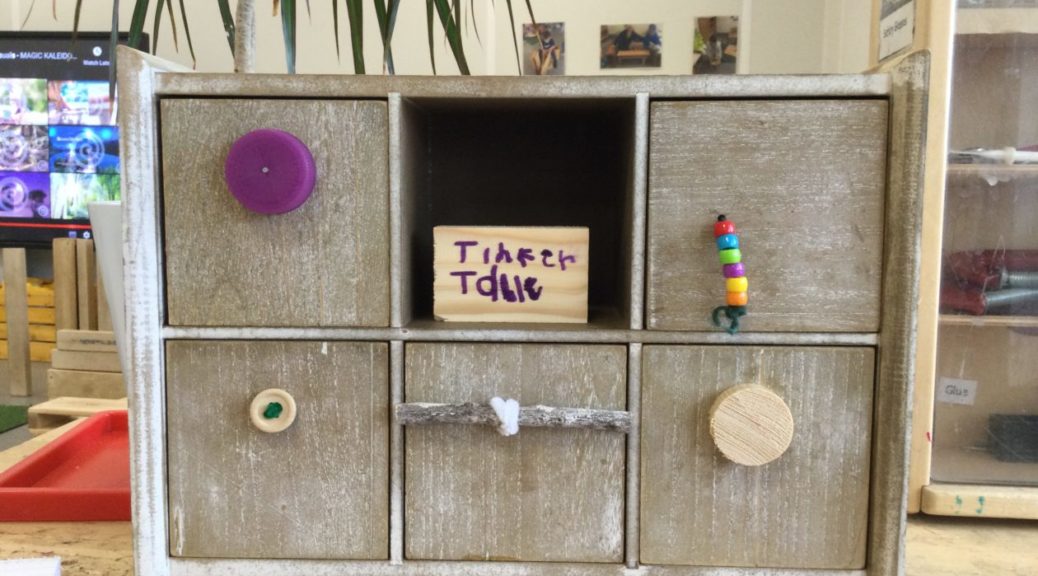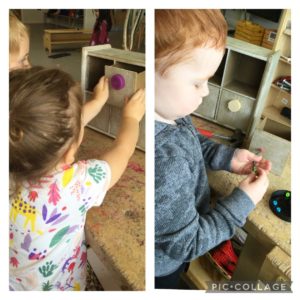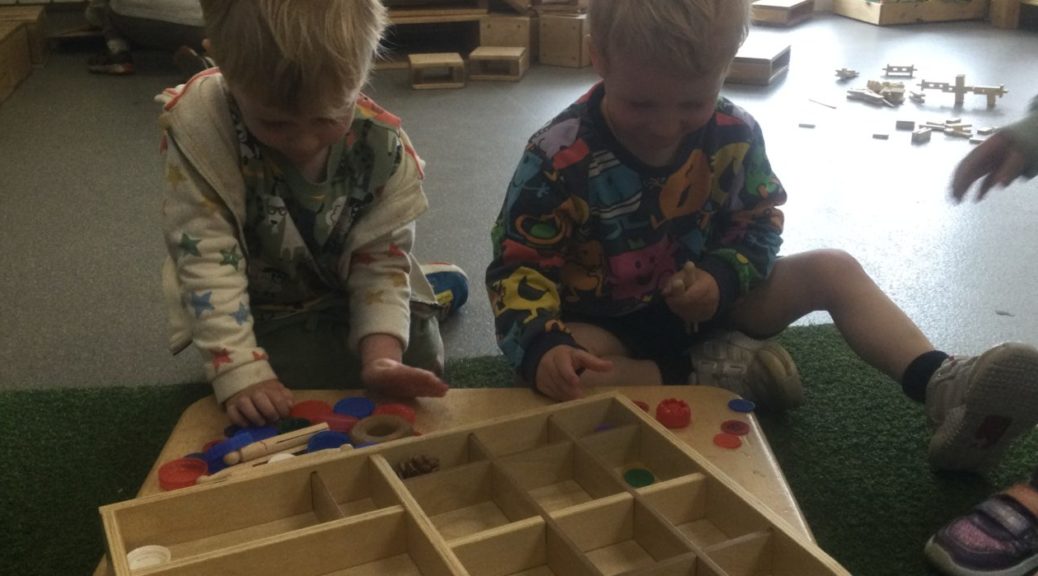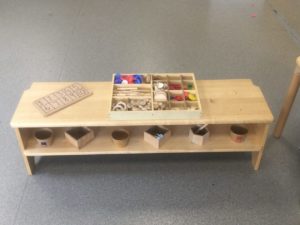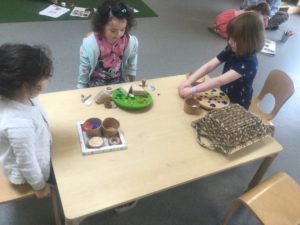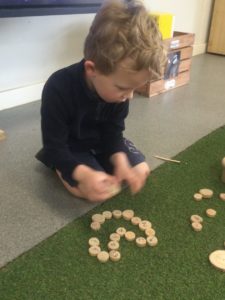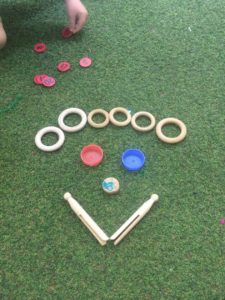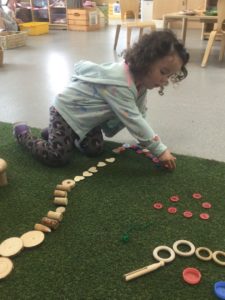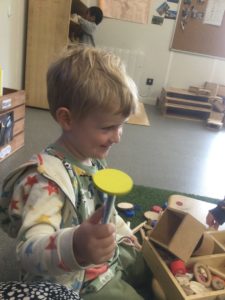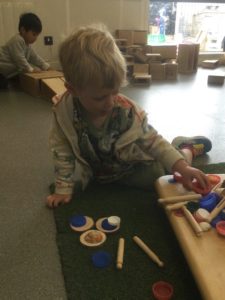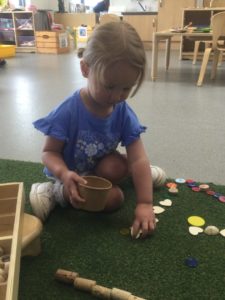It’s been a busy week for us in the garden. We are developing our motor skills in a variety of ways.

This simple but effective experience enabled the children to experiment with colour mixing as well as developing their fine motor and early writing skills as they made marks on the foil using different tools.
“ The blue got on the yellow and now the yellow looks a bit green”.
“I making fireworks”
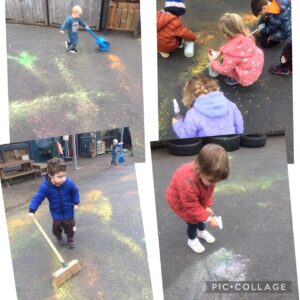
The fireworks have really grabbed the children’s attention and been the topic of conversation. Throwing the powder paint on the ground sparked an idea. “The ground is black like the sky at night”
They threw lots of different colours on the ground and used small and large items to move and redirect the paint in different shapes and patterns.

Learning how to move our bodies in different ways to develop our gross motor skills and mark making skills has been so much fun.
We filled some tights with different materials such as sponges, pasta, pom poms and balls and used them to create a piece of art. This allowed the children to explore descriptive language as they figured out how to make marks on the foil.
“The pasta is spikey”
“ This one is really heavy I had to spin round and round to get the paint up there”
“ I want to get it to the top so I have to stretch my legs and stand on my tiptoes and do a big jump”
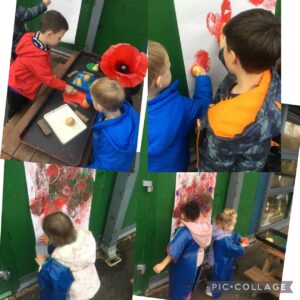
To end the week we thought it would be a good idea to begin learning about Remembrance Day and why we mark this as a special day. We watched a short child friendly video about the Poppy and decided to create our own.
The children used cut up potatoes and loose parts to make marks on the paper to create a lovely picture.
“ My dad wears a poppy for all the soldiers”
“ We can put purple on it too to remember the Animals”




